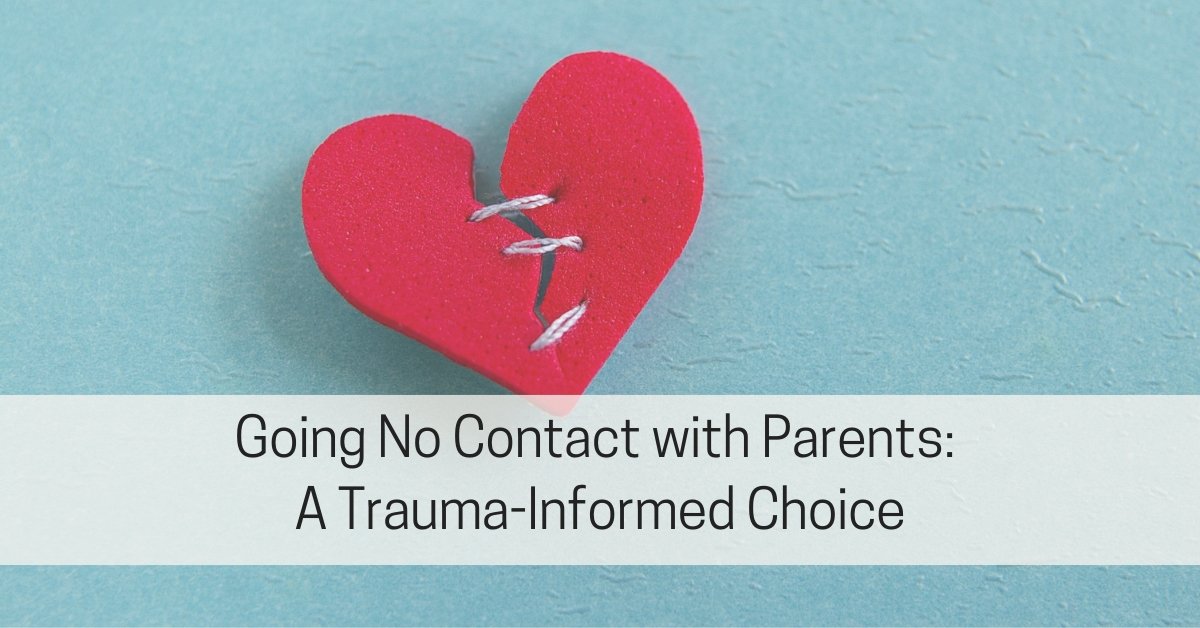Going no contact with parents isn’t a decision anyone makes lightly. Yet when someone chooses this path to escape abusive or toxic family dynamics, they’re often met with judgment, disbelief, and harsh criticism. Society tends to view these decisions as impulsive, selfish, or evidence that someone hasn’t tried hard enough. The reality is far more complex―and when we examine the choice of going no contact with parents through a trauma-informed lens, it emerges not as a failure, but as a necessary act of self-preservation and healing.
Why Adult Children Go No-Contact with Parents
Most adult children who cut ties with their families don’t arrive at this decision overnight. In my clinical experience working with hundreds of clients navigating family estrangement, the majority have spent years, sometimes decades, attempting to repair and improve these relationships. They’ve tried setting boundaries, having difficult conversations, asking for change, and giving “one more chance” countless times. They’ve endured holidays filled with tension, phone calls that leave them emotionally drained, and visits that require days of recovery.
Going no-contact with parents typically comes after a pattern of ongoing harm that started in childhood and continues in adulthood with no signs of changing (Agllias, 2016; Carr et al., 2015; Conti 2015; Scharp et al., 2015). This might include emotional abuse, manipulation, gaslighting, physical violence, financial exploitation, or chronic boundary violations. When repeated attempts at reconciliation fail and the relationship continues to cause psychological damage, no-contact is a protective measure.
Society Judges Adult Children Harshly for Going No Contact with Parents
Unfortunately, our culture’s emphasis on family loyalty often overshadows the reality of family dysfunction. Common responses to someone going no-contact include:
- “But they’re your parents – you only get one set.”
- “Family is everything; you’ll regret this.”
- “They did the best they could.”
These reactions, while often well-intentioned, completely miss the mark. They place the burden of maintaining harmful relationships on the victim while excusing the abuser’s behavior. They suggest that family members automatically deserve access to our lives, regardless of how they treat us.
Understanding Family Estrangement Through a Trauma-Informed Lens
A trauma-informed perspective considers how trauma, or experiences that overwhelm our ability to cope, impacts us. When we understand that trauma underlies the decision to cut ties, we recognize the decision as a healthy form of empowerment and an attempt to feel physically and emotionally safe.
As children, we are dependent on our caregivers for survival, both physically and emotionally. When those caregivers are the source of fear, pain, or instability, our developing nervous systems become wired for hypervigilance. We learn to anticipate danger, to walk on eggshells, and to suppress our own needs in order to survive the emotional climate of our homes. This constant state of alert and the lack of consistent safety and attunement can have lasting effects and rewires how we think, feel, and relate to others.
For those who haven’t experienced toxic or abusive parenting, the idea of cutting ties with a parent can seem drastic, even unthinkable. But when a relationship continues to cause harm despite countless attempts to establish healthy boundaries, estrangement becomes a trauma-informed choice. As I explain in my book “Cutting Ties with Your Parents,” it’s not selfish or meant to punish your parent. Instead, it’s about recognizing that your well-being, your healing, and your very sense of self are being compromised by continuing the relationship. It’s about acknowledging that the relationship is not safe for you, and distancing yourself from it will allow your nervous system to regulate and heal.
No-Contact Creates Space for Trauma Recovery
When viewed through a trauma-informed lens, going no-contact becomes a therapeutic intervention. By removing themselves from ongoing harm, individuals create space for healing that isn’t possible while remaining in toxic dynamics. Distance allows trauma survivors to:
- Recognize and name their emotions without fear of retaliation or dismissal
- Process their experiences without continued traumatization
- Develop a clearer understanding of what healthy relationships look like
- Build self-esteem that isn’t constantly being torn down
- Learn to trust their own perceptions and feelings
- Rediscover their authentic self outside of toxic family roles like scapegoat, caretaker, or peacekeeper
- Break generational cycles of abuse and dysfunction
The absence of constant criticism, manipulation, or emotional chaos allows their nervous system to regulate. They can begin to distinguish between past trauma responses and present-day reality. In my psychotherapy practice, many people report sleeping better, experiencing less anxiety, and feeling more present in their lives after going no-contact with toxic family members.
Reframing Self-Protection as Strength
One of the most damaging aspects of society’s judgment is the idea that protecting yourself from harm is selfish or wrong. A trauma-informed approach recognizes that self-protection is not only appropriate but necessary for healing. Just as we wouldn’t expect someone to remain in a burning building, we shouldn’t expect people to stay in relationships that continue to damage their physical or mental health.
Cutting ties with a toxic or abusive person takes tremendous courage. It often means facing criticism from other family members, dealing with pressure and scapegoating meant to guilt them back into contact, and grieving the family they wished they could have had. It requires giving up the hope that things will change if they just try hard enough.
Moving Forward with Compassion
Understanding no-contact through a trauma-informed lens doesn’t mean these decisions are easy or without anger and sadness. Many people who choose this path grieve deeply, not just for the relationship that was, but for the relationship that never existed. They mourn the parents who couldn’t provide safety and love, the childhood they deserved but didn’t receive.
The decision to go no-contact with abusive family isn’t a sign of weakness or failure. It’s evidence that someone finally values themselves enough to step away from harm. When we stop judging people for cutting ties and start supporting them with a trauma-informed perspective, we facilitate healing and growth. We acknowledge that everyone deserves relationships built on respect, safety, and genuine care—and that sometimes the healthiest choice is also the hardest one. In a trauma-informed world, that would be celebrated as an act of wisdom and self-love, not criticized as selfishness.
If you’re struggling with the decision to limit or end contact with toxic family members, you’re not alone. For more comprehensive guidance, support, and practical strategies for navigating family estrangement, I invite you to read my book “Cutting Ties with Your Parents: A Workbook to Help Adult Children Make Peace with Their Decision, Heal Emotional Wounds, and Move Forward with Their Lives.” It offers deeper insights into the healing process and concrete steps for building the life you deserve.
©2025 Dr. Sharon Martin, LCSW. All rights reserved. Photos courtesy of Canva.com.
“A step-by-step guide to navigating the complex emotions and practical considerations involved in this courageous choice. This workbook is a road map for healing and empowerment.”
-Tracy A. Malone, founder of Narcissistic Abuse Support
Agllias, K. (2016). Disconnection and decision-making: Adult children explain their reasons for estranging from parents. Australian Social Work, 69(1), 92–104.
Carr, K., Holman, A., Abetz, J., Kellas, J. K., & Vagnoni, E. (2015). Giving voice to the silence of family estrangement: Comparing reasons of estranged parents and adult children in a nonmatched sample. Journal of Family Communication, 15(2), 130–140.
Conti, R. P. (2015). Family estrangement: Establishing a prevalence rate. Journal of Psychology and Behavioural Science, 3(2), 28–35.
Scharp, K. M., Thomas, L. J., & Paxman, C. G. (2015). “It was the straw that broke the camel’s back”: Exploring the distancing communicatively constructed in parent-child estrangement backstories. Journal of Family Communication, 15(4), 330–348.
More Articles by Dr. Sharon
Publisher: Source link






